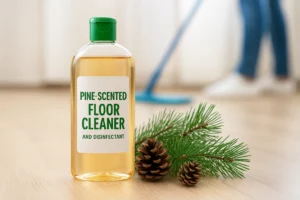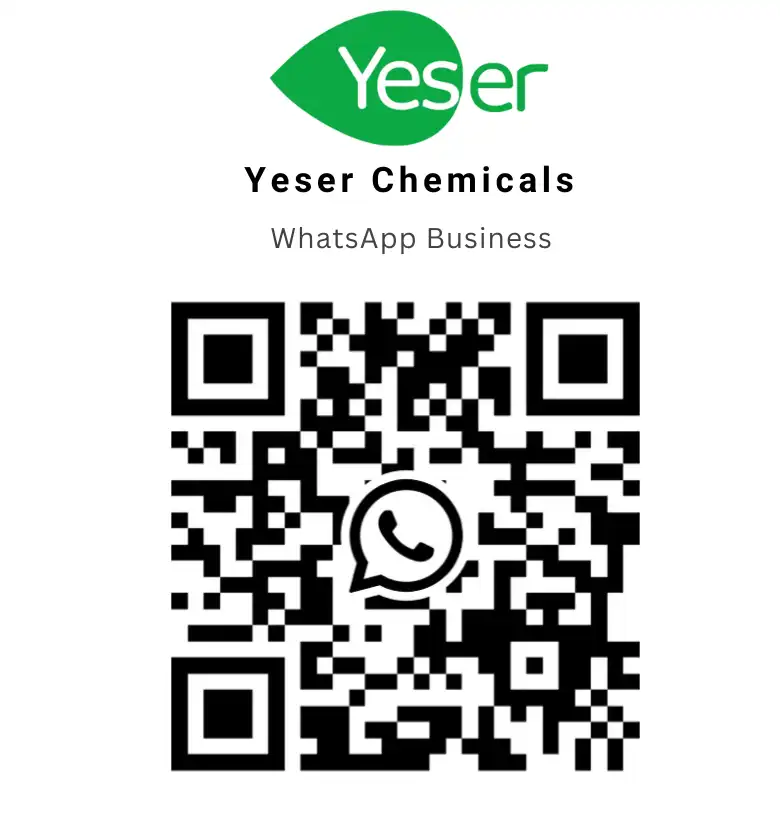Introduction
Imagine starting your day without your favorite shampoo, body wash, or laundry detergent. It’s hard to picture our lives without these everyday essentials, right? But have you ever wondered what makes these products so effective at foaming and cleansing? The secret lies in a group of versatile substances known as surfactants.
Surfactants are essential ingredients in a variety of modern household and personal care products. These substances are responsible for the cleaning, foaming, and emulsifying properties of many items we use daily.
In this article, we’ll unravel the mystery behind surfactants, shedding light on their importance in household and personal care products. From understanding their science to exploring their applications, we’ll decode the fascinating world of surfactants and how they contribute to our daily routines.
Understanding the Science of Surfactants
Cleansing Agents: How Surfactants Work
Surfactants, also known as surface-active agents, play a pivotal role in the cleaning process of various products. They achieve this through a unique molecular structure that allows them to interact with different types of molecules, such as water and oil.
A surfactant molecule consists of a hydrophilic (water-loving) head and a hydrophobic (water-repelling) tail. This dual nature enables surfactants to act as effective cleaning agents in the following ways:

Dispersion: When surfactants are added to a liquid, such as water, they orient themselves at the surface, with their hydrophilic heads pointing toward the water and their hydrophobic tails pointing away from it. This reduces the surface tension of the liquid, allowing it to spread more easily across surfaces and penetrate into small pores or crevices where dirt and grime reside.
Emulsification: Surfactants can also facilitate the mixing of two immiscible liquids, such as oil and water. The hydrophobic tails of surfactant molecules interact with oil particles, while the hydrophilic heads remain in contact with the water. This forms a stable emulsion, encapsulating the oil particles within tiny droplets suspended in the water. This process helps to break up and remove greasy stains and residues.
Dirt and Grime Removal: Surfactants are particularly effective at removing dirt and grime from surfaces due to their ability to form micelles. Micelles are spherical structures formed when the hydrophobic tails of surfactant molecules cluster together, trapping dirt and grime, while the hydrophilic heads face outward and interact with the surrounding water. This encapsulation process helps to lift and suspend the dirt particles in the solution, preventing them from redepositing on the surface.
The below video explain how surfactants work to cleanse:
Foaming, Thickening, and Emulsifying: The Many Functions of Surfactants
Surfactants play various roles in household and personal care products, including:
- Foaming: Surfactants help create foam in products like shampoos and body washes, providing a satisfying lather.
- Thickening: Some surfactants can increase the viscosity of a product, improving its texture and stability.
- Emulsifying: Surfactants can mix oil and water, enabling the creation of stable emulsions found in creams and lotions.
The Synergistic Effect: When Surfactants Work Together
Surfactants can work in combination to produce a synergistic effect. The synergistic effect occurs when two or more surfactants are used together and their combined effect is greater than the sum of their individual effects. This is because different surfactants have different properties and can work together to enhance each other’s performance.
For example, one surfactant may be good at removing oily stains, while another is good at removing dirt and grime. When these two surfactants are used together, they can work in tandem to remove both types of stains more effectively than either one could on its own.
In addition to more effective cleaning, the synergistic effect of surfactants can also be used to achieve other benefits, including enhanced foaming, better emulsification, increased solubility, and improved foaming.
Understanding Surfactant Types: Anionic, Cationic, Nonionic, and Amphoteric
Surfactants can be classified based on their molecular structure and charge. There are four main categories: anionic, cationic, nonionic, and amphoteric surfactants.
Anionic Surfactants
Anionic surfactants carry a negative charge on their hydrophilic head. They are the most consumed surfactants in home care and personal care products, found almost in all kinds of laundry detergents, dishwashing liquids, hair cares, skin cares, oral cares, etc.
The most commonly used anionic surfactants in home care and personal care products include:
- Linear Alkyl Benzene Sulphonic Acid(LABSA)
- Sodium Lauryl Ether Sulfate(SLES)
- Sodium Lauryl Sulfate(SLS)
- Ammonium Lauryl Ether Sulfate
- Alpha Olefin Sulphonate(AOS)
- Sodium Cocoyl Isethionate (SCI)
- Potassium Cocoate
- Sodium Lauroyl Sarcosinate
- Disodium Lauryl Sulfosuccinate
- Sodium Cocoyl Glycinate
- Sodium Methyl Cocoyl Taurate
Among the above, the last 4 are all amino acid-based surfactants, which have been trending in recent years, due to their ultra mildness.
Cationic Surfactants
Cationic surfactants have a positive charge on their hydrophilic head. They are often used in fabric softeners, hair conditioners, and some disinfectants. Common examples include quaternary ammonium salts, cetrimonium bromide(CTAB), benzalkonium chloride(BAC), and dimethyldioctadecylammonium chloride. Cationic surfactants can help reduce static electricity and improve the softness of fabrics.
Nonionic Surfactants
Nonionic surfactants have no charge on their hydrophilic head. They are typically used in combination with surfactants to enhance cleaning and foaming properties, and reduce skin irritation. Nonionic surfactants are less sensitive to water hardness and pH changes, making them versatile and stable.
These are the second largest used surfactants in household detergents and personal care products. Common examples include:
- Fatty Alcohol Polyoxyethylene Ether(AEO-7& AEO-9)
- Cocamide DEA(CDEA)
- Cocamide MEA(CMEA)
- C8-14 Alkyl Polyglycoside(APG)
Amphoteric Surfactants
Amphoteric surfactants can carry either a positive or negative charge depending on the pH of the solution. They are often found in mild personal care products such as baby shampoos and sensitive skin cleansers. Amphoteric surfactants provide gentle cleaning and conditioning properties. The most commonly used ones are Cocamidopropyl Betaine(CAPB) and Cocamidopropylamine Oxide(CAO).
| Role Classification | INCI Name | Trade Name | CAS No. | *Additionally Functions As |
|---|---|---|---|---|
| Anionic surfactant | Sodium Lauryl Ether Sulfate | Yeser® SLES 70% | 68585-34-2 | Foam booster and stabilizer Wetting and emulsifying agent Thickening agent |
| Linear Alkyl Benzene Sulphonic Acid | Yeser® LABSA 96% | 27176-87-0 | Wetting and emulsifying agent | |
| Alpha Olefin Sulphonate | Yeser® AOS 35%/ AOS 92% | 68439-57-6 | Foam booster and stabilizer Wetting and emulsifying agent |
|
| Ammonium Lauryl Ether Sulfate | Yeser® AESA 70% | 2235-54-3 | Foam booster and stabilizer Wetting and emulsifying agent Thickening agent |
|
| Potassium Cocoate | Yeser® KC-35 | 61789-30-8 | Foam booster and stabilizer Wetting and emulsifying agent |
|
| Disodium Lauryl Sulfosuccinate | Yeser® MS50 | 19040-44-9 | Foam booster and stabilizer Hydrotrope Conditioning agent |
|
| Sodium Lauroyl Sarcosinate | Yeser® LS30 | 137-16-6 | Foam booster and stabilizer Wetting and emulsifying agent Thickening agent Conditioning agent Antistatic agent |
|
| Sodium Cocoyl Glycinate | Yeser® GC30S | 90387-74-9 | Foam booster and stabilizer Wetting and emulsifying agent Conditioning agent |
|
| Potassium Cocoyl Glycinate | Yeser® GCK30S | 301341-58-2 | Foam booster and stabilizer Conditioning agent |
|
| Sodium Lauroyl Glutamate | Yeser® LG30S | 29923-31-7 | Foam booster and stabilizer Conditioning agent Antistatic agent |
|
| Sodium Methyl Cocoyl Taurate | Yeser® SMCT35S | 61791-42-2 / 12765-39-8 | Foam booster and stabilizer | |
| Nonionic surfactant | Fatty Alcohol Polyoxyethylene Ether | Yeser® AEO-7/ AEO-9 | 68131-39-5 / 68439-50-9 | Defoaming agent Wetting and emulsifying agent |
| Cocamide DEA | Yeser® CDEA | 68603-42-9 | Foam booster and stabilizer Wetting and emulsifying agent Thickening agent |
|
| Cocamide MEA | Yeser® CMEA | 68140-00-1 | Foam booster and stabilizer Wetting and emulsifying agent Thickening agent |
|
| Cocamide Methyl MEA | Yeser® CMMEA | 866889-75-0 | Foam booster and stabilizer Wetting and emulsifying agent Thickening agent |
|
| C8-14 Alkyl Polyglycoside | Yeser® APG0814 | 68515-73-1 / 110615-47-9 | Wetting and emulsifying agent | |
| Amphoteric surfactant | Cocamidopropyl Betaine | Yeser® CAB-35/ CAB-45 | 61789-40-0 | Foam booster and stabilizer Wetting and emulsifying agent Conditioning agent Antistatic agent |
| Cocamidopropylamine Oxide | Yeser® CAO-30 | 68155-09-9 | Foam booster and stabilizer Wetting and emulsifying agent Conditioning agent Antistatic agent |
|
| Dodecyl Dimethyl Betaine | Yeser® BS-12 | 683-10-3 | Foam booster and stabilizer Wetting and emulsifying agent Conditioning agent Antistatic agent |
|
| Dodecyldimethylamine Oxide | Yeser® OB-2 | 1643-20-5 | Foam booster and stabilizer Wetting and emulsifying agent Conditioning agent Antistatic agent |
From Nature to the Lab: Comparing Natural and Synthetic Surfactants
Natural vs. Synthetic Surfactants
Surfactants can be classified into two main categories: natural (bio-surfactants) and synthetic. Bio-surfactants are derived from living organisms, such as plants, animals, or microorganisms. They are typically biodegradable and considered more environmentally friendly. However, their production can be more costly and their performance may not always match synthetic surfactants.
Synthetic surfactants are produced using chemical reactions, often from petroleum-based raw materials. They offer higher performance in terms of cleaning efficiency and foaming, but may not be as environmentally friendly as bio-surfactants.
Oleochemicals: A Sustainable Alternative
Oleochemicals are chemicals derived from plant and animal fats and oils. They serve as a sustainable alternative to petroleum-based raw materials in the production of bio-surfactants. Examples of oleochemicals include glycerol, fatty acids, and fatty alcohols, which can be used to create a wide range of environmentally friendly surfactants.
Biodegradable Surfactants: The Future of Sustainability
Biodegradable surfactants are those that can be broken down by microorganisms in the environment, reducing their impact on ecosystems. As concerns over pollution and environmental damage grow, the demand for biodegradable surfactants is increasing. Manufacturers are investing in the development of these eco-friendly alternatives to traditional surfactants.
Surfactants in Action: Applications in Household and Personal Care Products
Laundry Detergents: The Power of Surfactants in Cleaning
Surfactants play a crucial role in laundry detergents, enhancing their cleaning capabilities. They work by reducing the surface tension of water, allowing it to penetrate fabric fibers and lift away dirt, grease, and stains. Anionic surfactants, such as LABSA, SLS and SLES, are commonly used in laundry detergents due to their excellent cleaning and foaming properties.
Dishwashing Liquids: Cutting Through Grease with Surfactants
Surfactants are essential in dishwashing liquids, as they help break down and remove grease from dishes, cutlery, and cookware. Anionic surfactants, such as SLS and SLES, are commonly used in these products due to their strong degreasing capabilities. Nonionic surfactants may also be added to enhance cleaning performance and reduce skin irritation.
Personal Care Products: Enhancing Shampoos, Conditioners, and Body Washes
Surfactants are key ingredients in shampoos, conditioners, and body washes, providing cleaning, foaming, and emulsifying properties. Anionic surfactants, such as SLS and SLES, create a rich lather that helps remove dirt and oils from hair and skin. Amphoteric and nonionic surfactants are often included to reduce irritation, enhance lather, build viscosity, and improve conditioning effects.
Conclusion
Surfactants play a vital role in the effectiveness and versatility of a wide array of household and personal care products. Their unique molecular structure allows them to perform multiple functions, including cleaning, foaming, and emulsifying.
By delving into the science and applications of surfactants, consumers can better understand the workings of the products they use daily and make more informed decisions when selecting these items. Furthermore, increased awareness about surfactants’ impact on the environment can drive the demand for greener alternatives, ultimately contributing to a more sustainable future for all.
Frequently Asked Questions (FAQs)
Q: What are surfactants?
A: Surfactants are substances that reduce the surface tension of liquids, allowing them to spread more easily across surfaces. They are commonly used in household and personal care products for their cleaning, foaming, and emulsifying properties.
Q: What are the different types of surfactants?
A: Surfactants can be classified into four main categories based on their molecular structure and charge: anionic, cationic, nonionic, and amphoteric surfactants. Anionic surfactants carry a negative charge, cationic surfactants have a positive charge, nonionic surfactants have no charge, and amphoteric surfactants can carry either a positive or negative charge depending on the pH of the solution.
Q: Are all surfactants harmful to the environment?
A: Not all surfactants are harmful to the environment. Biodegradable surfactants, such as some bio-surfactants and oleochemical-based surfactants, can be broken down by microorganisms in the environment, reducing their ecological impact. The demand for environmentally friendly surfactants is growing, and manufacturers are working to develop more sustainable alternatives to traditional surfactants.
Q: Can surfactants cause skin irritation?
A: Some surfactants, particularly certain anionic surfactants like SLS, can cause skin irritation in some individuals. However, not all surfactants are irritating. Amphoteric and nonionic surfactants are generally milder and less likely to cause irritation. Product formulations often include a mix of surfactants to balance cleaning performance with skin sensitivity.
Q: How do surfactants work in cleaning products?
A: Surfactants work as wetting agents in cleaning products, reducing the surface tension of water and allowing it to spread more easily across surfaces. They have a hydrophilic (water-loving) head and a hydrophobic (water-repelling) tail, which enables them to attach to both water and oil molecules. This characteristic allows surfactants to lift and remove dirt, grime, and grease from surfaces.






